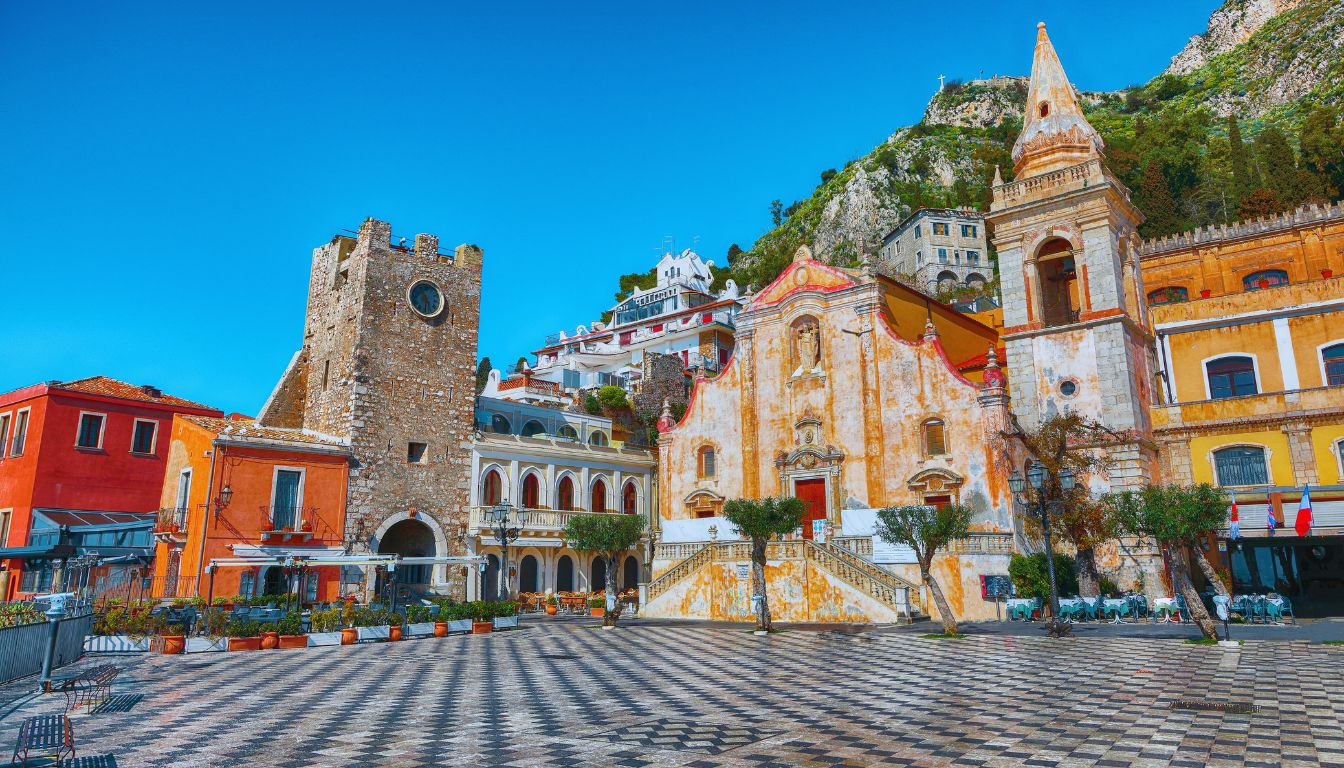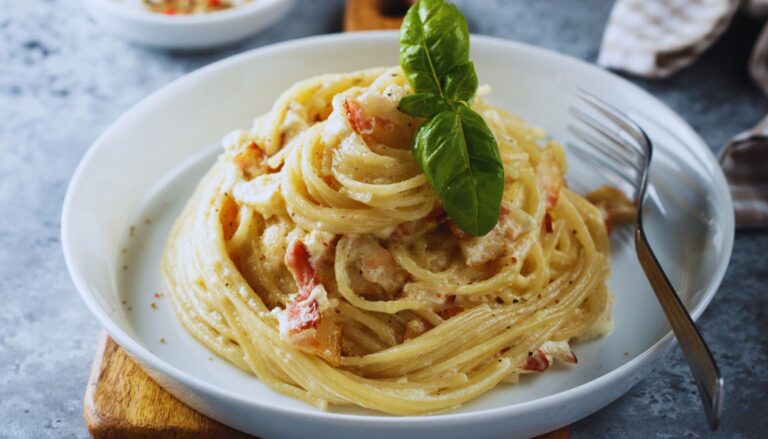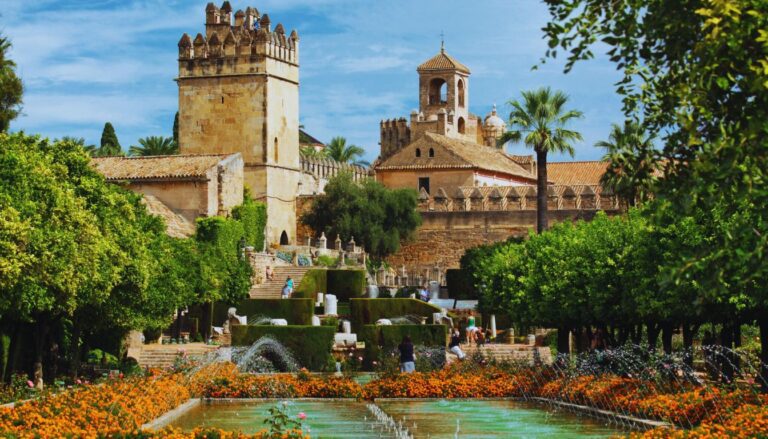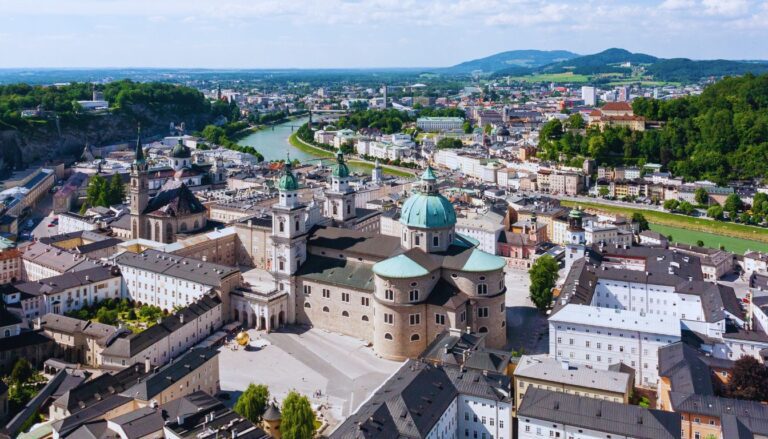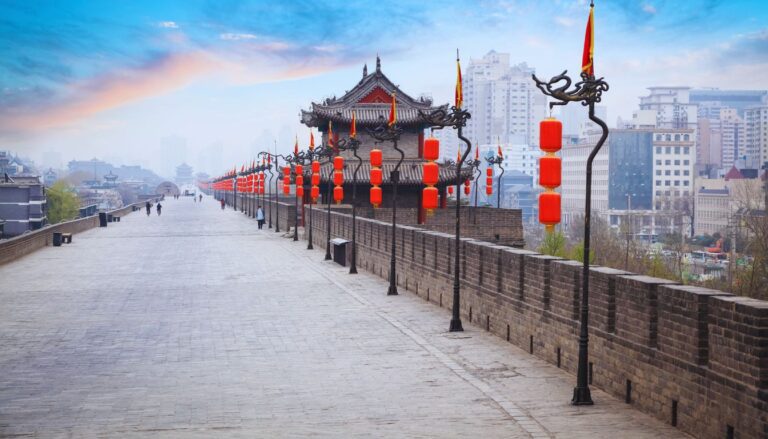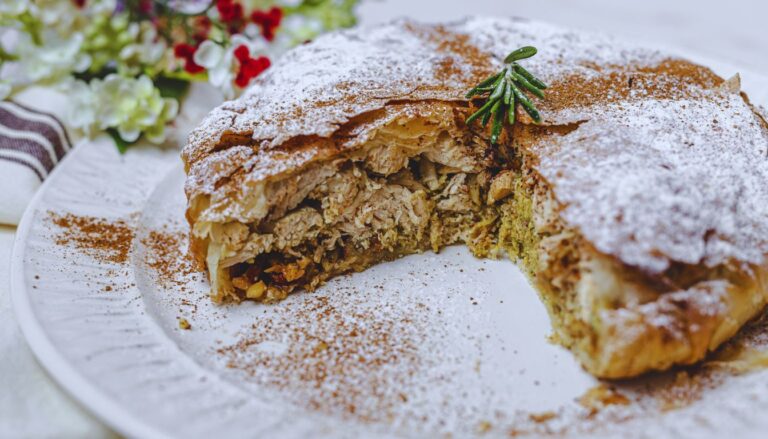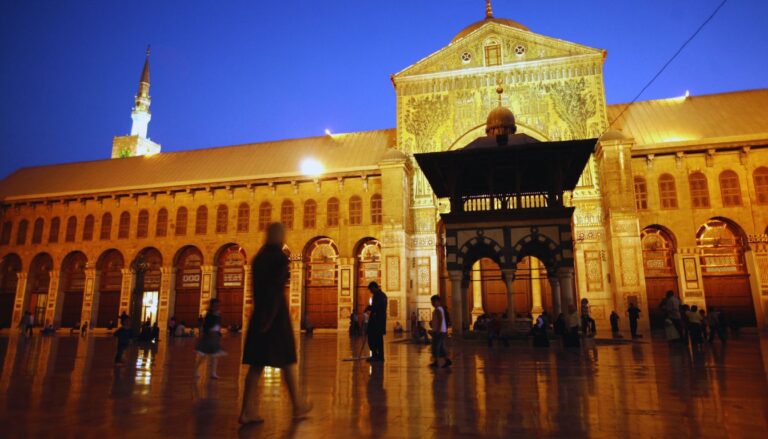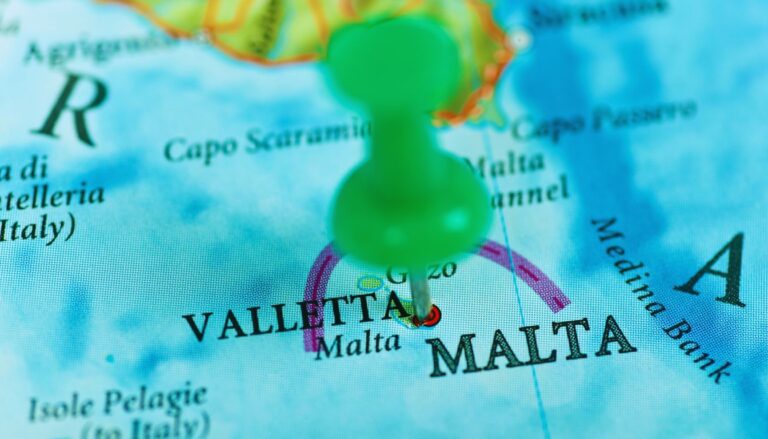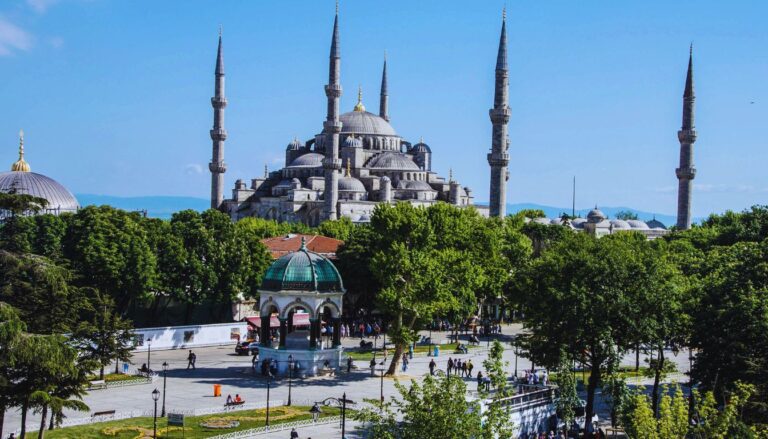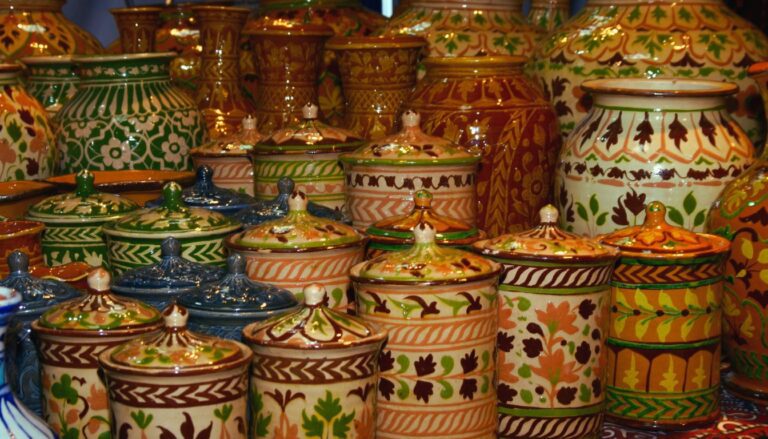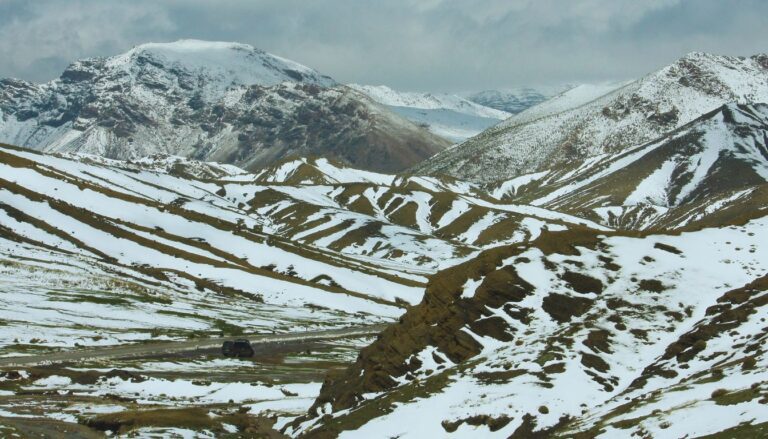Sicily, the largest island in the Mediterranean Sea, has been a crossroads of civilizations for millennia. Its strategic location at the heart of the Mediterranean has made it a coveted prize for various powers throughout history. This article explores the profound influences of Greek, Roman, Arab, and Norman civilizations on Sicily, each leaving an indelible mark that has shaped the island’s unique cultural identity and historical significance.
From the ancient Greek colonies that dotted its shores to the grand Norman cathedrals that still stand today, Sicily’s landscape is a living testament to its rich and varied past. As we delve into the island’s history, we’ll uncover how each civilization contributed to the vibrant tapestry that is modern Sicily, creating a cultural blend unlike any other in the world.
Table of Contents
Sicily in Ancient Times
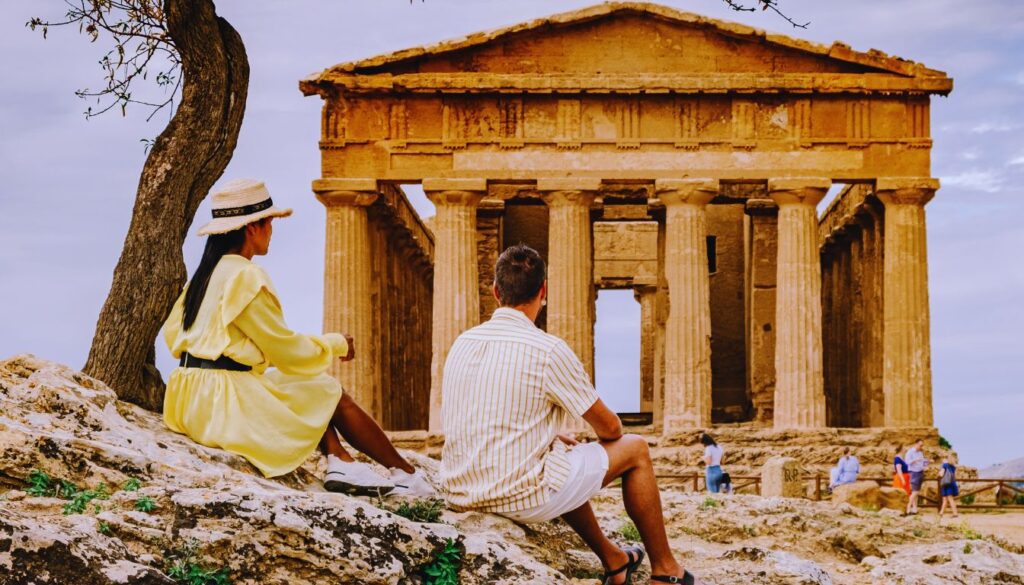
Before the arrival of the major Mediterranean powers, Sicily was home to several indigenous peoples. The earliest known inhabitants were the Sicani, who according to legend, originated from the Iberian Peninsula. They were joined or followed by the Elymians, who settled in the western part of the island, and the Sicels, who gave Sicily its name.
These early inhabitants left their mark on the island through:
- Primitive agricultural practices
- Early forms of social organization
- Unique burial customs, as evidenced by rock-cut tombs
Archaeological finds, such as pottery and tools, provide glimpses into the lives of these ancient Sicilians. However, their cultures were gradually overshadowed and assimilated by the arrival of more technologically advanced civilizations from the east.
The strategic importance of Sicily was recognized early on by seafaring peoples. Phoenician traders established outposts on the island, primarily along the western coast. These early contacts set the stage for the transformative influences that were to come, as Sicily’s position at the center of the Mediterranean made it an irresistible target for expanding empires.
Greek Colonization and Influence
The Greeks were among the first major civilizations to establish a significant presence on Sicily. Beginning in the 8th century BCE, they founded numerous colonies on the island’s eastern coast, a process known as the “Western colonization.”
Key Greek Colonies:
- Syracuse (Siracusa): Founded in 734 BCE by settlers from Corinth, it became one of the most powerful Greek cities in the Mediterranean.
- Agrigento (Akragas): Established around 582 BCE, it was renowned for its wealth and architectural splendor.
- Selinunte: Founded in 628 BCE, it was known for its grand temples and ongoing conflicts with Carthage.
- Gela: Established in 688 BCE, it was the birthplace of the tyrant Gelon, who later ruled Syracuse.
These colonies grew into prosperous city-states, rivaling and sometimes surpassing those of mainland Greece. The period of Greek dominance, lasting nearly 500 years, left an enduring legacy on Sicily.
Greek influence on Sicily was profound, affecting numerous aspects of life:
- Architecture: The Greeks built magnificent temples, such as those in the Valley of the Temples in Agrigento. These structures, with their iconic Doric columns, remain some of the best-preserved examples of Greek architecture outside of Greece itself.
- Art: Greek sculpture and pottery flourished on the island. Sicilian Greek artisans developed their own styles, blending mainland Greek techniques with local influences.
- Literature: Sicily became a center of Greek culture, producing notable figures like the poet Theocritus, born in Syracuse around 300 BCE. His bucolic poetry influenced later Roman writers like Virgil.
- Philosophy: The island was home to important philosophical figures, most notably Empedocles of Agrigento (c. 494-434 BCE). His theory of the four classical elements (earth, air, fire, and water) influenced scientific thought for centuries.
- Politics: The Greek period in Sicily saw the rise of powerful tyrants, such as Dionysius I of Syracuse, who expanded Sicilian Greek influence across the Mediterranean. These rulers often patronized the arts and sciences, contributing to Sicily’s cultural flowering.
- Economy: Greek colonists introduced advanced agricultural techniques, including more efficient cultivation of olives and grapes. They also established extensive trade networks throughout the Mediterranean.
The Greek legacy in Sicily extends beyond these tangible aspects. Their presence laid the foundation for Sicily’s cosmopolitan character, setting a precedent for the island as a place where cultures meet and blend. This Greek heritage continued to influence Sicily long after the political power of the Greek colonies had waned, forming an integral part of the island’s cultural DNA.
Roman Rule and Its Impact
Rome’s interest in Sicily grew as the island’s strategic importance became increasingly apparent. The First Punic War (264-241 BCE) between Rome and Carthage was largely fought over control of Sicily, highlighting its significance in the power struggles of the ancient Mediterranean.
Roman Conquest and Administration:
- 241 BCE: Following Rome’s victory in the First Punic War, Sicily becomes the first Roman province outside the Italian peninsula.
- The island served as a vital grain supplier for Rome, earning it the nickname “Granary of Rome.”
- Roman governors, including the infamous Verres (known for his corruption and later prosecuted by Cicero), administered the island.
Roman influence on Sicily was significant and long-lasting:
- Infrastructure: Romans built an extensive network of roads, aqueducts, and amphitheaters. The Roman road system, in particular, improved communication and trade across the island.
- Agriculture: They introduced new farming techniques and crops, further enhancing Sicily’s agricultural productivity. The Roman latifundia system (large agricultural estates) was implemented, changing the social and economic landscape of rural Sicily.
- Law and Governance: Roman administrative systems were implemented, bringing Sicily more closely into the orbit of Roman political and legal structures.
- Language: Latin began to supplant Greek as the language of administration, though Greek remained widely spoken, especially in the eastern part of the island.
- Religion: Roman gods were introduced, often syncretized with existing Greek deities. Later, Sicily became an early center of Christianity within the Roman Empire.
- Economy: Under Roman rule, Sicily’s economy diversified. While agriculture remained crucial, industries such as textiles and ceramics also flourished.
Notable Roman-era sites in Sicily include:
- The Villa Romana del Casale near Piazza Armerina, famous for its exceptionally well-preserved and extensive mosaics. This UNESCO World Heritage site provides a vivid glimpse into the luxury of elite Roman life in Sicily.
- The Roman Theater in Taormina, which, although originally Greek, was significantly rebuilt and expanded during the Roman period.
- The Roman Amphitheater in Syracuse, demonstrating the Roman passion for gladiatorial contests and other spectacles.
These sites not only attest to the Roman presence on the island but also to the continuity between Greek and Roman cultures in Sicily. Many Roman buildings were constructed on or near earlier Greek sites, illustrating the layered nature of Sicilian history.
The Roman period in Sicily, lasting nearly seven centuries, deeply ingrained Latin culture into the Sicilian way of life. This Roman heritage, blended with the earlier Greek influences, formed the classical foundation upon which later cultures would build.
The Byzantine Era
As the Western Roman Empire declined in the 5th century CE, Sicily came under the control of the Eastern Roman (Byzantine) Empire. This transition marked the beginning of the Byzantine era in Sicily, which lasted from the 6th to the 9th century CE.
Byzantine Sicily:
- The island served as a crucial outpost for the Byzantine Empire, helping to maintain its influence in the western Mediterranean.
- Greek language and Orthodox Christianity became more prominent, reinforcing the island’s connections to the eastern Mediterranean.
- Byzantine art and architecture flourished, particularly in religious buildings.
Key aspects of Byzantine rule in Sicily included:
- Administrative Changes: Sicily was organized into a theme, a Byzantine administrative unit combining civil and military authority under a single governor.
- Religious Developments: The island became a stronghold of Orthodox Christianity. Many churches were built or renovated in the Byzantine style, and religious practices aligned more closely with Constantinople than Rome.
- Cultural Shifts: The Greek language, which had declined under Roman rule, experienced a resurgence. This linguistic shift had long-lasting effects on the Sicilian dialect.
- Economic Role: Sicily continued to be an important source of grain for the empire, and its strategic location made it vital for Byzantine trade in the western Mediterranean.
- Artistic Influences: Byzantine artistic styles, particularly in mosaics and icon painting, left a lasting imprint on Sicilian art. The use of gold leaf and vibrant colors became characteristic of Sicilian religious art.
Notable Byzantine sites in Sicily include:
- The Church of Santa Maria dell’Ammiraglio (also known as La Martorana) in Palermo, which, although built during the later Norman period, features spectacular Byzantine-style mosaics.
- The Cattolica di Stilo in Calabria (while not in Sicily proper, it’s a well-preserved example of Byzantine architecture in southern Italy).
However, Byzantine control was increasingly challenged by Arab invasions in the 9th century. The gradual conquest of the island by Muslim forces marked the end of the Byzantine era in Sicily and the beginning of a new chapter in the island’s history.
The Byzantine period, though often overshadowed by the preceding Roman era and the subsequent Arab and Norman periods, played a crucial role in shaping Sicily’s cultural and religious landscape. It reinforced the island’s Greek heritage and set the stage for the unique cultural fusion that would characterize medieval Sicily.
Arab Conquest and Cultural Contributions
The Arab conquest of Sicily began in 827 CE when a Byzantine military commander named Euphemius invited the Aghlabid dynasty of North Africa to assist him in a rebellion against the Byzantine Emperor. This intervention quickly turned into a full-scale invasion, and by 902 CE, the entire island was under Muslim control. This period, lasting until the Norman conquest in the 11th century, brought significant changes to Sicily.
Arab Influences:
- Agriculture: The Arabs introduced new crops and agricultural techniques that transformed the Sicilian landscape and economy:
- New crops: Citrus fruits, cotton, sugar cane, and date palms were introduced.
- Irrigation: Advanced water management systems, including underground canals (qanats), improved agricultural productivity.
- Architecture: The Arabs introduced new architectural styles and urban planning concepts:
- The layout of cities like Palermo was reorganized, with narrow, winding streets typical of Islamic urban design.
- New building types, such as mosques and public baths (hammams), were constructed.
- Science and Mathematics: Arab scholars brought advanced knowledge in these fields:
- Astronomy and navigation techniques were improved.
- The Arabic numeral system and algebraic concepts were introduced.
- Language: Many Sicilian words have Arabic origins, particularly in agriculture, cuisine, and place names:
- Examples include “zafferano” (saffron), “cotone” (cotton), and “marsala” (a type of wine and a city name).
- Cuisine: Arab culinary traditions significantly influenced Sicilian cuisine:
- The use of spices like saffron and cinnamon became common.
- Sweet and sour flavor combinations, characteristic of Arab cuisine, were incorporated into Sicilian dishes.
- Commerce: Under Arab rule, Sicily became an important trade hub:
- Connections with North Africa and the Middle East were strengthened.
- New industries, such as paper-making and silk production, were established.
- Education and Culture:
- Libraries and centers of learning were established, particularly in Palermo.
- Poetry and literature flourished, with Arab-Sicilian poets gaining renown throughout the Islamic world.
Cities like Palermo flourished under Arab rule, becoming centers of learning and culture. The Arab geographer Ibn Hawqal, visiting in 973 CE, described Palermo as one of the most beautiful and prosperous cities of the time.
The Arab period in Sicily was characterized by relative religious tolerance. While Islam was the official religion, Christians and Jews were allowed to practice their faiths as dhimmis (protected minorities), although they were required to pay a special tax.
Despite the eventual end of Arab political control, their influence on Sicily was profound and long-lasting. The unique blend of Byzantine and Arab cultures that developed during this period set the stage for the equally distinctive Norman-Arab-Byzantine culture that would follow.
Norman Conquest and Kingdom of Sicily
In 1061, Norman adventurers from southern Italy, led by Robert Guiscard and his younger brother Roger Hauteville, began the conquest of Sicily. By 1091, the entire island was under Norman control. This marked the beginning of a new era in Sicilian history, often considered a golden age for the island.
Norman Sicily:
- Establishment of the Kingdom of Sicily:
- In 1130, Roger II was crowned King of Sicily, creating a powerful Norman state that included southern Italy.
- The Kingdom of Sicily became one of the wealthiest and most culturally advanced states in Europe.
- Religious Tolerance:
- The Normans maintained a policy of relative religious tolerance, allowing Christians, Muslims, and Jews to coexist.
- This tolerance fostered a unique cultural environment where different traditions could blend and influence each other.
- Architecture:
- Norman buildings in Sicily blended Byzantine, Arab, and Romanesque styles, creating a unique architectural language known as Norman-Arab-Byzantine style.
- Notable examples include the Cathedral of Monreale and the Palatine Chapel in Palermo, both renowned for their spectacular mosaics and intricate designs.
- Government and Administration:
- The Normans established a centralized administration, drawing on Byzantine, Arab, and Norman traditions.
- They introduced feudalism to Sicily, but maintained many existing Arab and Byzantine administrative structures.
- Cultural Fusion:
- The Norman court in Palermo became a center of cultural exchange, where Greek, Arab, Jewish, and Norman scholars and artists worked together.
- King Roger II’s court geographer, Al-Idrisi, produced one of the most accurate world maps of the medieval period.
- Economy:
- The Normans continued and expanded Sicily’s role as a major Mediterranean trading power.
- They maintained the agricultural innovations introduced by the Arabs and further developed industries like silk production.
- Language and Literature:
- While Latin became the official language of administration, Greek, Arabic, and the emerging Sicilian vernacular continued to be widely used.
- The Sicilian School of poetry, which flourished under Frederick II in the 13th century, was crucial in the development of Italian literature.
Notable Norman structures in Sicily include:
- The Cathedral of Monreale: A stunning example of Norman architecture, famous for its Byzantine-style mosaics covering over 6,000 square meters.
- The Palatine Chapel in Palermo: The royal chapel of the Norman kings, it features a unique blend of Byzantine mosaics, an Arab-style wooden ceiling, and Norman architectural elements.
- Castello Ursino in Catania: A 13th-century castle that served as a royal residence for the Kings of Sicily.
The Norman period in Sicily, lasting until the late 13th century, was characterized by a remarkable synthesis of cultures. The Normans, rather than imposing their own culture wholesale, adopted and adapted elements from the Byzantine and Arab traditions they encountered. This approach created a rich, multicultural society that was unique in medieval Europe.
The legacy of Norman Sicily extends far beyond the island itself. The Kingdom of Sicily under Norman rule became a model of enlightened monarchy and cultural tolerance, influencing political thought and artistic trends throughout Europe. The Norman period thus represents not just a pivotal chapter in Sicilian history, but a significant contribution to the broader narrative of European civilization.
Lasting Legacies of Each Civilization
Each civilization that ruled Sicily left an indelible mark on the island’s culture, society, and physical landscape. These legacies continue to shape Sicily to this day, creating a unique cultural tapestry that reflects the island’s rich and complex history.
- Greek Legacy:
- Philosophical thought: The ideas of Greek philosophers from Sicily, like Empedocles, continued to influence Western philosophy.
- Art and architecture: Greek temples and theaters remain among Sicily’s most iconic landmarks.
- Language: Many Greek words and names persist in the Sicilian dialect.
- Cultural identity: The concept of Sicily as a center of learning and culture has its roots in the Greek period.
- Roman Legacy:
- Legal systems: Roman law formed the basis for much of Sicily’s later legal structures.
- Infrastructure: Roman roads, aqueducts, and urban planning continued to shape Sicily’s landscape.
- Language: Latin deeply influenced the development of the Sicilian dialect and, later, standard Italian.
- Agriculture: Roman farming techniques and land management practices had a lasting impact on Sicilian agriculture.
- Byzantine Legacy:
- Religious art: Byzantine mosaics and icon styles continued to influence Sicilian art long after Byzantine rule ended.
- Orthodox Christian traditions: Although Sicily is predominantly Roman Catholic today, traces of Orthodox practices remain in some local traditions.
- Greek language revival: The Byzantine period reinforced the use of Greek in Sicily, influencing the local dialect and maintaining connections with the Eastern Mediterranean. Administrative systems: Some Byzantine administrative practices persisted even under later rulers.
- Arab Legacy:
- Agricultural innovations: The introduction of new crops and irrigation systems permanently altered Sicily’s agricultural landscape and economy.
- Scientific knowledge: Arab advancements in mathematics, astronomy, and medicine enriched Sicilian intellectual life.
- Architectural styles: The influence of Islamic architecture can still be seen in some Sicilian buildings, particularly in Palermo.
- Culinary traditions: Many popular Sicilian dishes and ingredients have roots in Arab cuisine.
- Linguistic contributions: Numerous words of Arabic origin remain in the Sicilian dialect, particularly in relation to agriculture, cuisine, and place names.
- Norman Legacy:
- Architectural fusion: The unique Norman-Arab-Byzantine style of architecture remains one of Sicily’s most distinctive features.
- Feudal system: The social and economic structures introduced by the Normans shaped Sicilian society for centuries.
- Cultural tolerance: The Norman model of relative religious and cultural coexistence influenced later periods of Sicilian history.
- Artistic patronage: The Norman emphasis on grand building projects and artistic commissions set a precedent for later Sicilian rulers.
These legacies often intertwined and built upon each other. For example, the Norman kings adopted and adapted elements from their Byzantine and Arab predecessors, creating a unique synthesis. This process of cultural layering and fusion is perhaps the most enduring legacy of all, giving Sicily its characteristic complexity and richness.
Sicily’s Unique Cultural Blend
Sicily’s history of successive conquests and influences has resulted in a unique cultural blend that sets it apart from both mainland Italy and other Mediterranean regions. This fusion is evident in various aspects of Sicilian life:
- Cuisine:
- Sicilian food reflects a combination of Greek, Arab, and Norman influences.
- Examples include pasta con le sarde (pasta with sardines, pine nuts, and raisins, showing Arab influence) and arancini (rice balls, with origins traced back to the Arab introduction of rice).
- Language:
- The Sicilian dialect incorporates elements from Greek, Latin, Arabic, Norman French, and other languages.
- Many place names in Sicily have diverse linguistic origins, reflecting the island’s complex history.
- Architecture:
- Sicily’s architectural landscape is a visual representation of its layered history.
- Churches often display a mix of styles, such as Norman structures with Arab-influenced domes and Byzantine mosaics.
- Festivals and Traditions:
- Many Sicilian festivals have roots in various historical periods.
- For instance, the Feast of Santa Rosalia in Palermo combines Catholic traditions with elements that can be traced back to ancient Greek and Roman festivals.
- Art:
- Sicilian art often displays a fusion of styles from different civilizations.
- This is particularly evident in decorative arts, where Byzantine, Arab, and Norman motifs might be combined in a single work.
- Social Customs:
- Some Sicilian social norms and practices reflect the island’s diverse cultural influences.
- For example, the importance of hospitality in Sicilian culture has been attributed to both Greek and Arab influences.
- Genetic Heritage:
- Studies have shown that Sicilians have a diverse genetic makeup, reflecting the various populations that have settled on the island over millennia.
This cultural mosaic makes Sicily a fascinating study in the blending of Mediterranean civilizations. The island’s ability to absorb and synthesize diverse influences has created a culture that is distinctly Sicilian, yet connected to the broader Mediterranean world.
Archaeological Sites and Historical Landmarks
Sicily boasts numerous sites that showcase its rich history, providing tangible links to the island’s diverse past. These sites not only attract tourists but also serve as invaluable resources for researchers studying Mediterranean history.
- Greek Theaters:
- Theater of Syracuse: One of the largest and best-preserved ancient Greek theaters, it’s still used for performances today.
- Theater of Taormina: Offers spectacular views of Mount Etna and the Ionian Sea, blending natural beauty with historical significance.
- Greek Temples:
- Valley of the Temples, Agrigento: A UNESCO World Heritage site featuring some of the best-preserved ancient Greek temples outside of Greece itself.
- Temple of Segesta: A well-preserved Doric temple set in a stunning natural landscape.
- Roman Sites:
- Villa Romana del Casale near Piazza Armerina: Famous for its extraordinary mosaics, this UNESCO site provides insights into elite Roman life.
- Roman Theater and Amphitheater in Catania: These structures demonstrate the importance of entertainment in Roman society.
- Arab-Norman Palermo and the Cathedral Churches of Cefalù and Monreale (UNESCO World Heritage Site):
- Palazzo dei Normanni (Norman Palace): Once the seat of the Kings of Sicily, it showcases the unique Norman-Arab-Byzantine architectural style.
- Cattedrale di Palermo: A church that embodies Sicily’s diverse architectural heritage, with elements from multiple periods.
- Duomo di Cefalù: A Norman cathedral known for its imposing towers and beautiful Byzantine mosaics.
- Cattedrale di Monreale: Renowned for its extensive and spectacular Byzantine mosaics.
- Byzantine Sites:
- Church of Santa Maria dell’Ammiraglio (La Martorana) in Palermo: Features stunning Byzantine mosaics and architecture.
- Castello Ursino in Catania: While primarily associated with the Norman period, it also has Byzantine elements.
- Medieval Castles:
- Castello Ursino, Catania: A 13th-century castle that has survived earthquakes and volcanic eruptions.
- Castello di Erice: Offering panoramic views from atop Mount Erice, this castle has origins dating back to the Norman period.
- Baroque Cities:
- While not from the ancient or medieval periods, the Late Baroque Towns of the Val di Noto (another UNESCO World Heritage site) showcase Sicily’s later artistic flowering following a devastating earthquake in 1693.
These sites provide a chronological journey through Sicily’s history, from ancient Greek colonies to medieval Norman strongholds and beyond. They offer visitors and researchers alike the opportunity to experience firsthand the layers of history that make Sicily unique.
The preservation and study of these sites continue to yield new insights into Sicily’s past. Ongoing archaeological work regularly uncovers new findings, adding to our understanding of the island’s rich history and its place in the broader context of Mediterranean civilization.
Modern Sicily: A Living Testament to Its Past
Today, Sicily continues to reflect its complex history in various aspects of contemporary life:
- Tourism:
- Historical sites are major attractions, drawing millions of visitors annually.
- Cultural tourism has become a significant part of Sicily’s economy, with many towns and cities capitalizing on their unique historical heritage.
- Cultural Events:
- Many festivals and traditions have ancient roots, such as the Feast of Saint Agatha in Catania, which dates back to the 5th century.
- Historical reenactments, like the Infiorata di Noto (flower festival), celebrate the island’s artistic traditions.
- Academic Interest:
- Sicily remains a focal point for studies in Mediterranean history, archaeology, and cultural exchange.
- Universities and research institutions around the world maintain active programs focused on Sicilian history and culture.
- Culinary Traditions:
- Sicilian cuisine continues to reflect its multicultural heritage, with dishes that can be traced back to various historical periods.
- The slow food movement has helped preserve traditional Sicilian recipes and agricultural practices.
- Language and Dialect:
- While standard Italian is the official language, the Sicilian dialect, with its mix of linguistic influences, remains widely spoken.
- Efforts are being made to preserve and study the Sicilian dialect as a unique cultural asset.
- Architecture and Urban Planning:
- Many Sicilian cities maintain their historical centers, with buildings from various eras coexisting in a living urban fabric.
- Modern development often has to balance with historical preservation, leading to unique urban landscapes.
- Arts and Crafts:
- Traditional crafts, such as ceramics and puppetry, continue to thrive, often incorporating motifs and techniques from different historical periods.
- Identity:
- Sicilians take pride in their unique cultural heritage, often identifying strongly with their island’s history.
- This sense of distinct identity coexists with feelings of Italian and European belonging, reflecting Sicily’s historical position as a crossroads of cultures.
- Environmental and Agricultural Practices:
- Some agricultural techniques introduced by past civilizations, like certain irrigation methods, are still in use today.
- There’s growing interest in reviving ancient crop varieties and traditional farming methods as part of sustainable agriculture initiatives.
- Contemporary Art and Literature:
- Modern Sicilian artists and writers often draw inspiration from the island’s rich history, creating works that reinterpret historical themes for contemporary audiences.
Sicily’s ability to maintain connections with its past while adapting to the modern world makes it a unique case study in cultural continuity and change. The island serves as a living testament to the enduring impact of historical influences and the potential for cultural synthesis.
As Sicily faces contemporary challenges such as economic development, environmental conservation, and social change, its rich historical heritage continues to provide both a source of identity and a resource for addressing these issues. The lessons of cultural coexistence and adaptation drawn from Sicily’s history remain relevant in today’s globalized world.
Conclusion
Sicily’s history as a melting pot of Greek, Roman, Arab, and Norman civilizations has created a unique cultural tapestry that continues to fascinate and inspire. The island stands as a testament to the power of cultural exchange and the enduring legacies of great civilizations.
Key takeaways from our exploration of Sicily’s rich history include:
- The layered nature of Sicilian culture, where each civilization built upon and adapted elements from its predecessors.
- The remarkable resilience and adaptability of Sicilian society in the face of successive conquests and cultural influences.
- The tangible legacy of this diverse history, visible in Sicily’s architecture, art, language, and cuisine.
- The ongoing relevance of Sicily’s historical experience to contemporary issues of cultural interaction and identity.
Understanding Sicily’s past not only illuminates the history of the Mediterranean but also provides insights into the processes of cultural interaction and synthesis that continue to shape our world today. As a microcosm of Mediterranean history, Sicily offers valuable lessons on the potential for cultural diversity to create vibrant and enduring societies.
In an era of globalization and increasing cultural exchange, Sicily’s historical experience of blending diverse influences while maintaining a distinct identity resonates strongly. It reminds us that cultural encounters, while sometimes challenging, can lead to remarkable creativity and resilience.
As we look to the future, Sicily’s rich historical tapestry continues to evolve. The island faces modern challenges, from economic development to environmental conservation, but does so with the strength of its diverse cultural heritage. In this way, Sicily not only preserves its past but also uses it as a foundation for navigating the complexities of the modern world.
In conclusion, the study of Sicily’s history offers more than just an understanding of one island’s past. It provides a window into the broader patterns of Mediterranean and European history, the processes of cultural synthesis, and the enduring impact of historical legacies on contemporary societies. Sicily’s story is a powerful reminder of the potential for human societies to create beauty and innovation through cultural exchange and adaptation.
Discover the must-visit cultural destinations of Southern Italy

